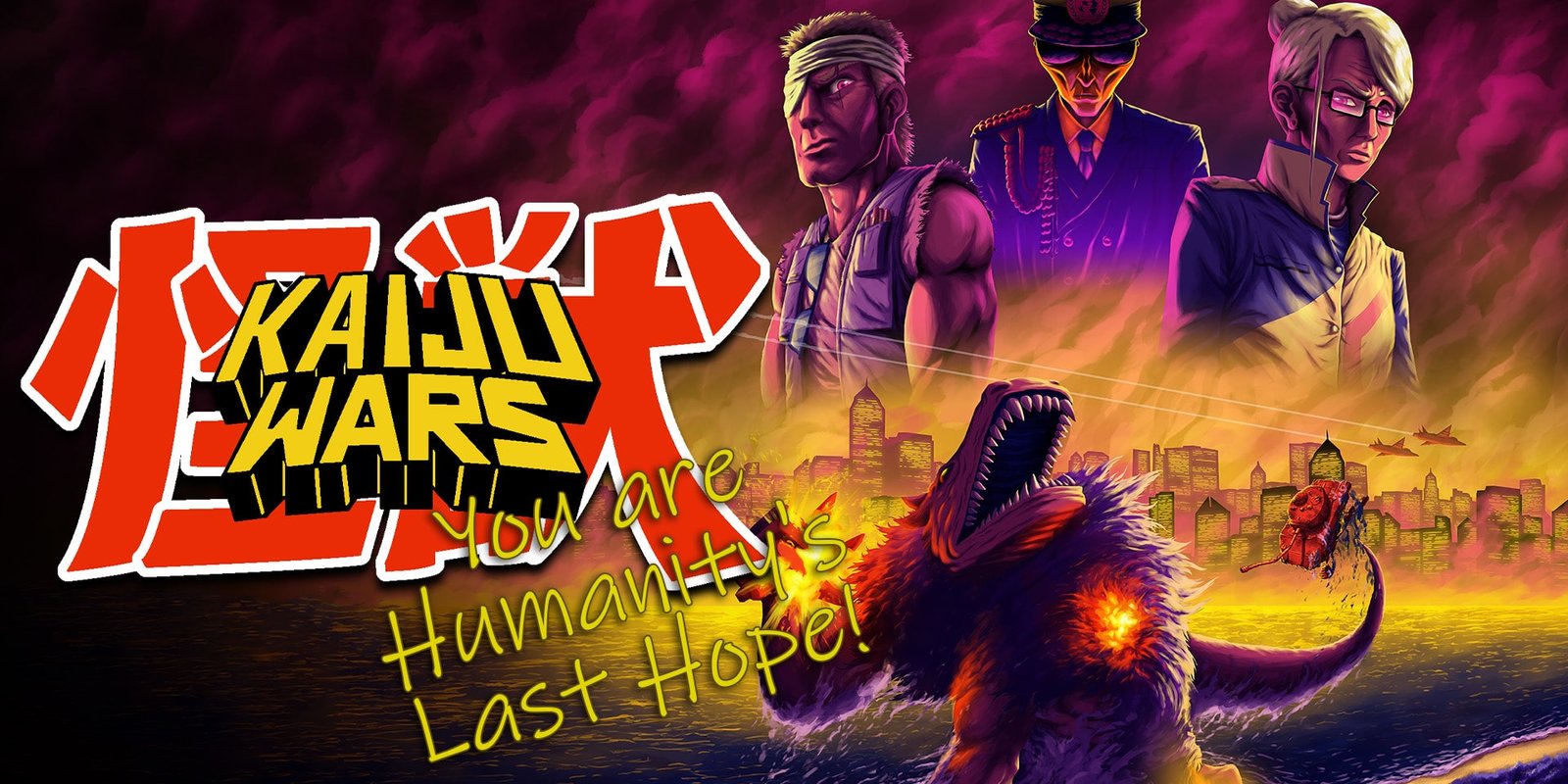Kaiju Wars is a fresh release that puts you in the role of humanity trying to survive a Kaiju siege with tactics gameplay.
Quick View
Title: Kaiju Wars
Release Date: April 28, 2022
Price: $19.99
Suggested Audience Age: Ages 10 and up
Time to Play: 25 hours
Availability: Steam, coming to consoles later this year
Recommended for fans of: Godzilla, Advance Wars, and big aesthetics
Geek to Geek Media was provided with a review copy of this title.
There’s no more surefire way of getting my attention than by inserting the word “kaiju” into your game title. Making it a turn-based strategy game on top of that ensures that I’ll check it out. Kaiju Wars, developed by Foolish Mortal Games and Michael Long, is that desired combination of giant monster premise and strategy gameplay, and it’s the sort of game I dreamed about playing as a child.

A Love Letter to Monster Movies
In contrast with the gritty cinematic “Monsterverse” that is driving the bulk of kaiju entertainment these days, Kaiju Wars is lighthearted satire. The highly satirical story sees you in the role of the mayor of Floatio City in the midst of a giant monster invasion. With no known way of killing the beasts, you rely on the expertise of kaiju expert Dr. Wagner and Major Danger, who provides military assistance. Your goal is to drive off the kaiju long enough to develop a serum that will stop them for good.
Spread over six acts, each displayed as several pages of a comic book, the story campaign offers varied challenges. As in games with similar presentations such as Valkyria Chronicles, each “panel” isn't necessarily a playable mission. Some are visual novel-style story segments, and there are even live-action “FMV” news scenes. It all lends perfectly to the B-movie-style presentation with plenty of charm to spare. It takes roughly 25 hours to get through the campaign, which sprinkles in some optional missions as well.

Kaiju Wars‘ Mission Structure
The basic goal of each mission in Kaiju Wars is to protect Dr. Wagner's lab from being stomped on long enough for her to reach a specified number of scientific breakthroughs. Breakthroughs can occur by meeting certain objectives, such as filling a gauge with science points. You can outright purchase science points with city funds, but certain buildings also generate them every turn.
Each turn consists of three phases: Economy, Military, and Kaiju. The Economy Phase is where you earn funds and science points depending on the type of buildings that are still standing. During the Military Phase you use projects (more on those later), build structures or troops, or attack with military units. Creating a powerful force is important, though even the most impressive army can only temporarily drive off a monster. Meanwhile, all it takes for a monster to take out a building or unit is to simply walk over it. Monsters also have additional attacks and counters that they can use during the Kaiju Phase, so don't get too attached to your military units.
Much of the strategy is derived from following the monsters' single-mindedness. After appearing on a map, a monster will always head straight for the nearest building, crushing anything in its path. You may be forced to divide your forces if a path splits and you're not sure which direction the monster will take. Buildings that are an equal distance apart also pose a dilemma, but the game generously shows the probability of a monster selecting nearby spaces as a percentage. Sometimes you'll even need to consciously build near the monster's path to change its trajectory.
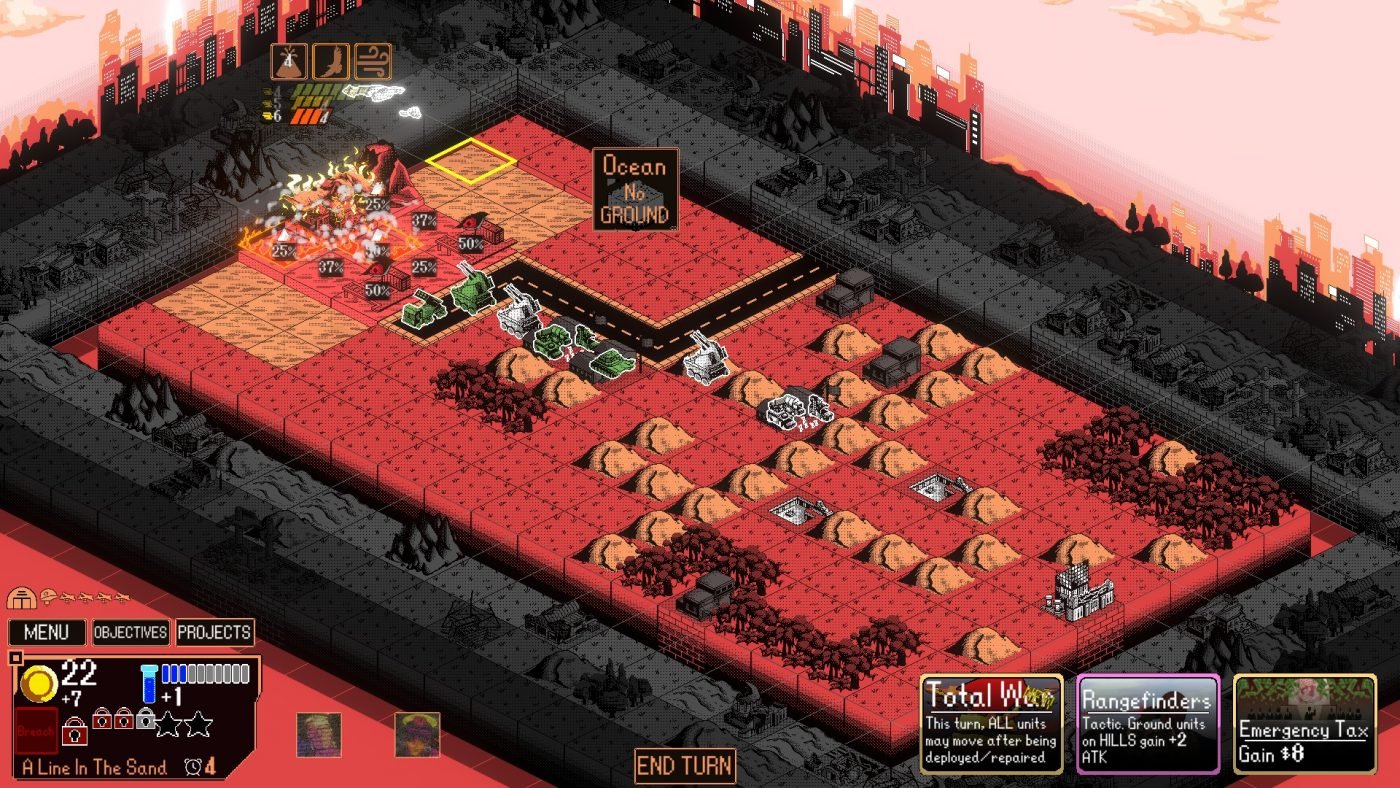
Project Decks Keep Things Fresh
Kaiju Wars has a simplified “card deck” mechanic that offers just enough of a random element to constantly keep players on their toes. You can choose between three randomly-selected cards per turn, with each card representing a city project. Projects consist of a wide variety of benefits. Project cards can boost city funds, grant experimental weapons, or provide long-lasting stat boosts to military units.
Perhaps you're a single turn away from reaching a breakthrough, but a monster is about to destroy Dr. Wagner's lab. A project card can be used to give you an instant boost in science points, effectively ending the mission right then and there.
Project cards don't always work in the player's favor, however. The mysterious antagonists behind the kaiju attacks have their own “Dark Project” deck that can turn the tide in their favor. Dark Projects can power up kaiju, create crises on random spaces, or take away Security icons. Once all Security icons are gone, all kaiju immediately discover Dr. Wagner's location and make a beeline toward her. She can be moved from one lab to another via truck, but you won't earn any science points or funds while she is away from a lab.

Customize Your Units!
Kaiju Wars is a fairly difficult strategy game at times, but you have many options at your disposal to help level the playing field. You can use medals, which are earned by completing in-mission challenges, to upgrade unit stats. Upgrades can be used to better balance units. Most units are either good against only ground-based or flying monsters, but after a few strategic upgrades, they can hold their own against either. These upgrades can be reset at any time, so be sure to adjust your stats for each individual mission.
You can also use medals to recruit additional scientific researchers – each with their own unique perks. If a forested map is giving you trouble, you can bring along a researcher who earns extra science points when near a forest. Some missions even allow you to customize your Project deck. Theming a deck around a particular researcher is a great way to capitalize on science points and secure an early victory.
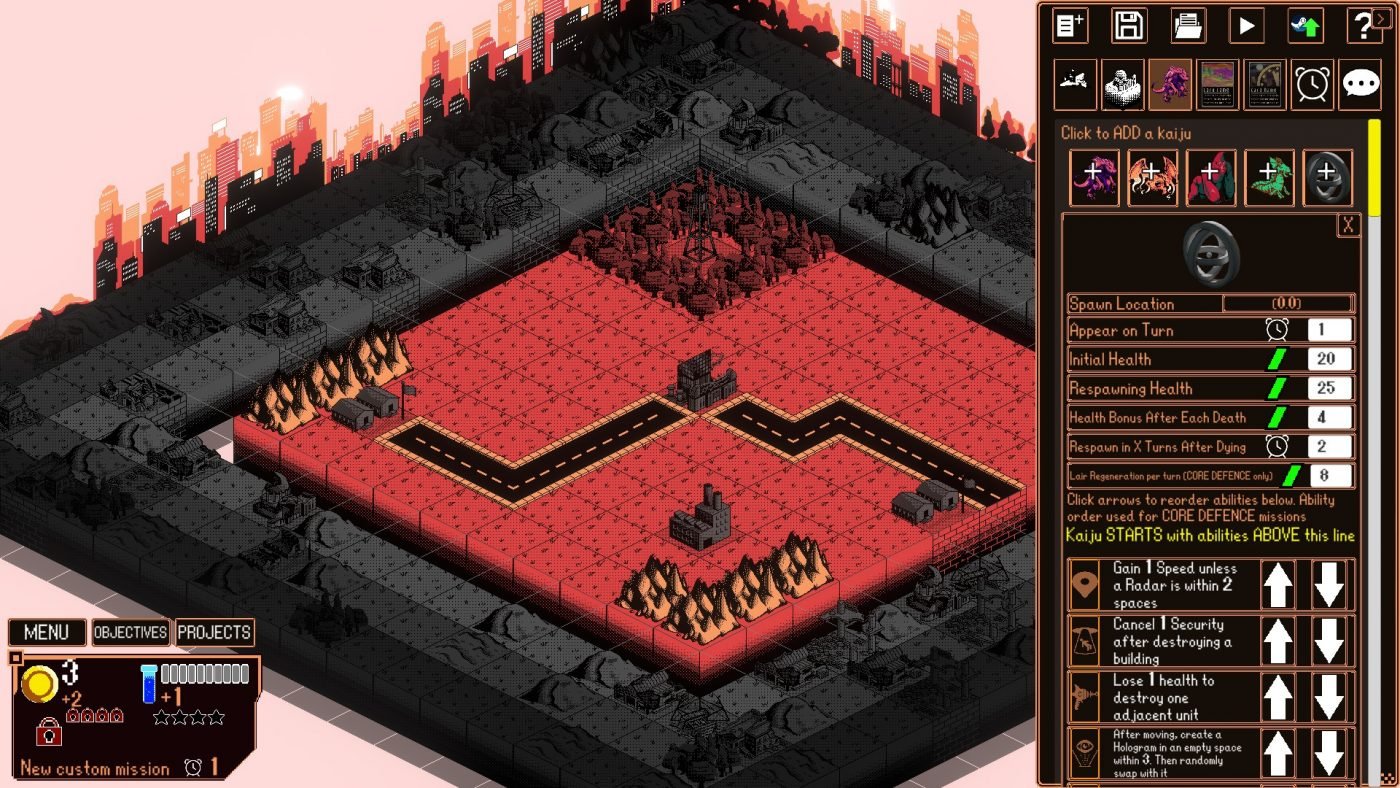
Visuals and Sound
Kaiju Wars‘ presentation is full of nostalgic charm for anyone with a fondness for B-movies. The main menu takes on the appearance of a cluttered desk, with the aforementioned campaign represented by a graphic novel. You can view leaderboards, weekly challenges (available when the game officially launches), and even watch public domain monster movies that appear on a set of monitors in the background. The attention to detail and interactive easter eggs make even the first screen feel like a heartfelt homage to a bygone era.
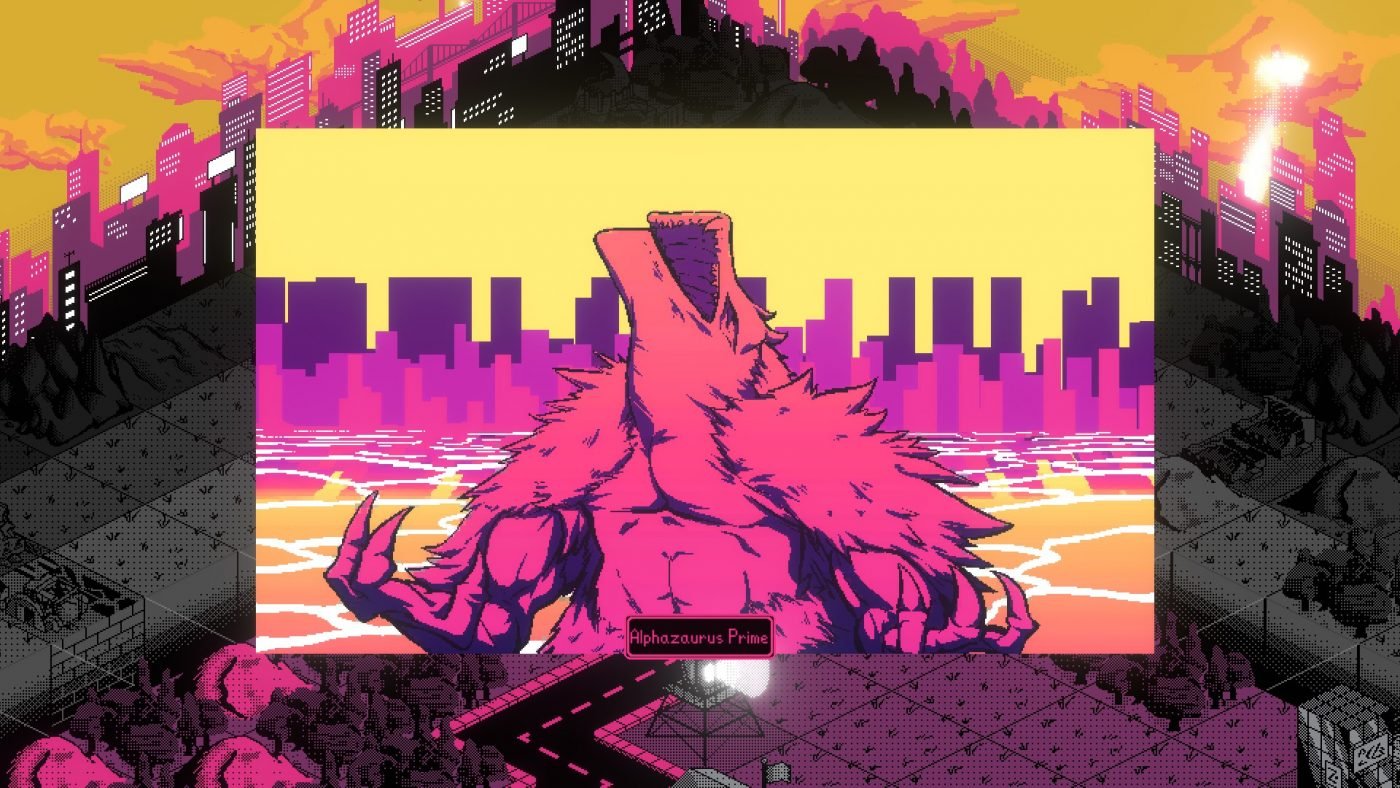
The graphical style is simplistic but never feels cheap. Each diorama-like map has a neon-drenched art style with dichromatic leanings, and the game has a striking look that sometimes reminds me of the LCD displays on pinball machines. The crisp pixel art gives the game an appropriately retro feel. While there are only a handful of monsters in the game, each animates fluidly and has a “hand-sketched” style that conveys a lot of personality. Most of Kaiju Wars' monsters resemble iconic cinematic monsters such as Godzilla, King Kong, and Rodan, but the homage never feels remotely lazy.
Things are equally inspired in the sound department. Each act is set in a different city with its own leitmotif, and the chiptune melodies are ridiculously catchy. Those melodies warble with varying intensity depending on the situation, making you fully aware of the pressure you're facing. Sound effects are appropriately over-the-top. Monsters roar deafeningly and buildings crumble with booming reverberation. The overall combination is more than enough to raise the hairs on your arm in a do-or-die situation.
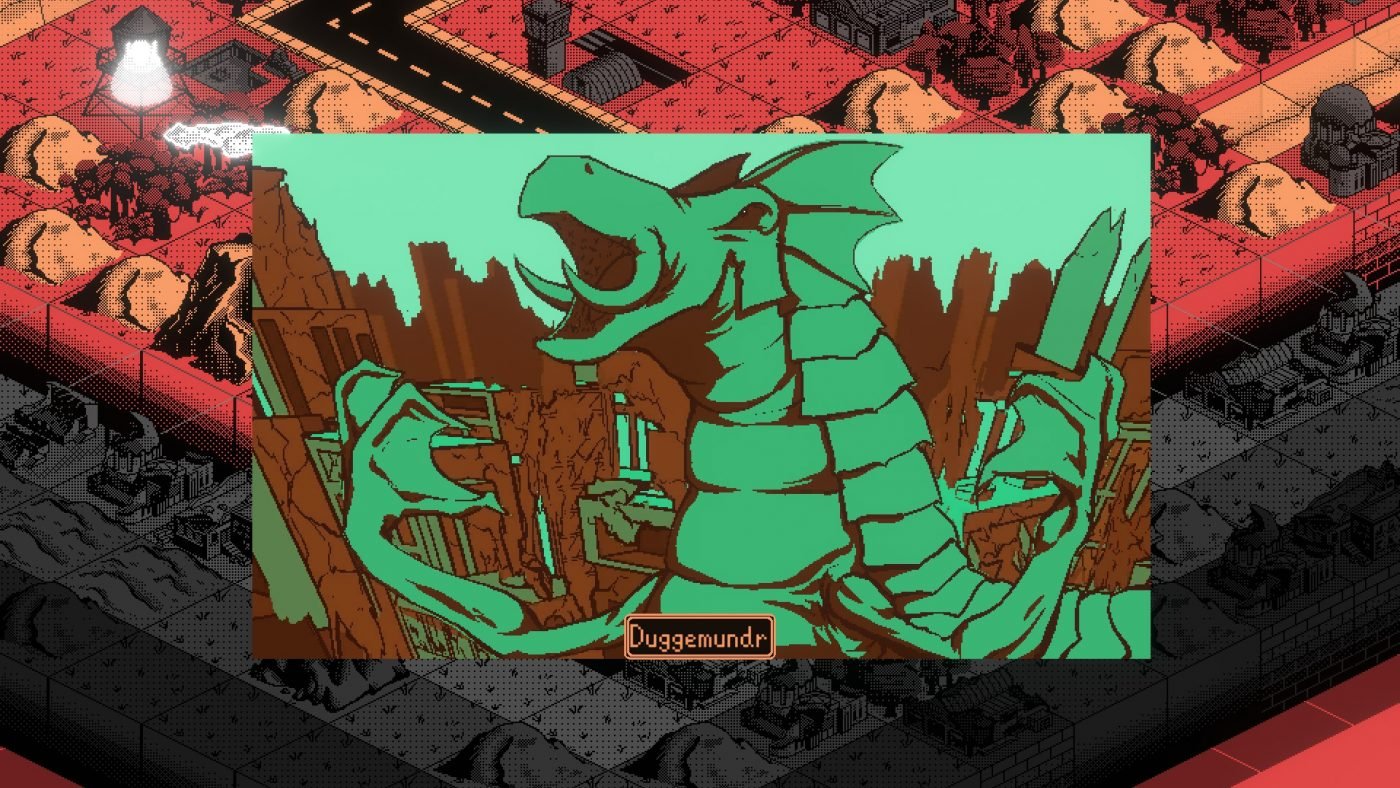
Final Thoughts
Kaiju Wars isn't the first turn-based strategy game to make use of giant monsters, but it's very easily one of the best. It's not quite as “snappy” as 2018's Into the Breach, but I personally prefer its more involved mission structure. My biggest complaint is that one simple mistake can lead to complete failure. Replaying missions can take a while, but you can thankfully speed through animations by holding Tab.
If you're obsessed with kaiju cinema like me, Kaiju Wars is a no-brainer purchase. It will eventually end up on consoles, but it's perfectly suited for PC. On top of a satisfying and lengthy campaign, weekly challenges and a map editor mode make Kaiju Wars a robust package. Even the campaign has a fair amount of replayability through customizing units and Project decks.

